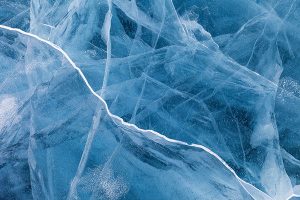FOR IMMEDIATE RELEASE
“Revealing the Freezing-Induced Alteration in Microplastic Behavior and Its Implication for the Microplastics Released from Seasonal Ice”
Environmental Science & Technology
Most bodies of water contain minute plastic particles that get trapped at the surface when ice forms. But when the ice melts, the microplastics have changed. According to research published in ACS’ Environmental Science & Technology, the thawed particles might be larger and sink or float faster, depending on the polymer type. The study’s authors say freezing could alter the environmental impact of microplastics, including their accumulation in freshwater lake or river sediments.

The polymers that produce microplastics have different behaviors in the environment. For instance, polyethylene (PE) is less dense than water and floats, whereas polyurethane (PU) and polytetrafluoroethylene (PTFE) are denser than water and sink toward lake beds and seafloors. Buoyancy, as well as particle size, salinity and other environmental conditions, affect whether the microplastics stay at the water’s surface or get buried in sediment. To understand how freezing impacts PE, PU and PTFE particles, Chunjiang An and colleagues conducted laboratory experiments with fresh and saltwater.
An and the research group started with particles of each polymer (between 6 and 10 micrometers) in separate solutions, ranging from freshwater to the salinity levels in seawater. The team froze the samples for 24 hours and then completely thawed them. In freshwater, all three polymers’ particles increased in size after freezing compared to a control kept cool for 24 hours. Specifically, they observed a greater change (46%) in PE, a polymer that repels water, than the increase (9%) in PU, a polymer that attracts water, which, the researchers suggest, causes particles to disperse more after freezing. However, as salt levels increased in the samples, freezing did not impact any polymer’s particle size compared to the cool-temperature controls. The researchers hypothesize that brine channels within the ice structures give trapped particles spaces to avoid compressing and joining to form larger clumps.
Next, the researchers investigated the forces behind the particle movements they observed in the experiments, where more PTFE and PU microplastics settled at the bottom of the beakers after the freeze-thaw cycle than before. Using calculations of the balance between gravitational, buoyant and drag forces on the particles, they estimated that particles would rise (PE) or sink (PFTE and PU) in water faster after freezing and thawing from ice because of the increased buoyancy force on the particles.
The researchers acknowledge that the freezing period used in this study is shorter than in natural environments, where freezing can last several months or years. Therefore, they say this study provides a foundational examination of the fate of various polymer particles when released from ice in cold regions, and indicates that even rapid freezing could accelerate the amount of microplastics settling in sediments.
The authors acknowledge funding from the Natural Resources Canada and the Natural Sciences and Engineering Research Council of Canada.
###
The American Chemical Society (ACS) is a nonprofit organization chartered by the U.S. Congress. ACS’ mission is to advance the broader chemistry enterprise and its practitioners for the benefit of Earth and all its people. The Society is a global leader in promoting excellence in science education and providing access to chemistry-related information and research through its multiple research solutions, peer-reviewed journals, scientific conferences, eBooks and weekly news periodical Chemical & Engineering News. ACS journals are among the most cited, most trusted and most read within the scientific literature; however, ACS itself does not conduct chemical research. As a leader in scientific information solutions, its CAS division partners with global innovators to accelerate breakthroughs by curating, connecting and analyzing the world’s scientific knowledge. ACS’ main offices are in Washington, D.C., and Columbus, Ohio.
To automatically receive press releases from the American Chemical Society, contact newsroom@acs.org.
Note: ACS does not conduct research, but publishes and publicizes peer-reviewed scientific studies.





